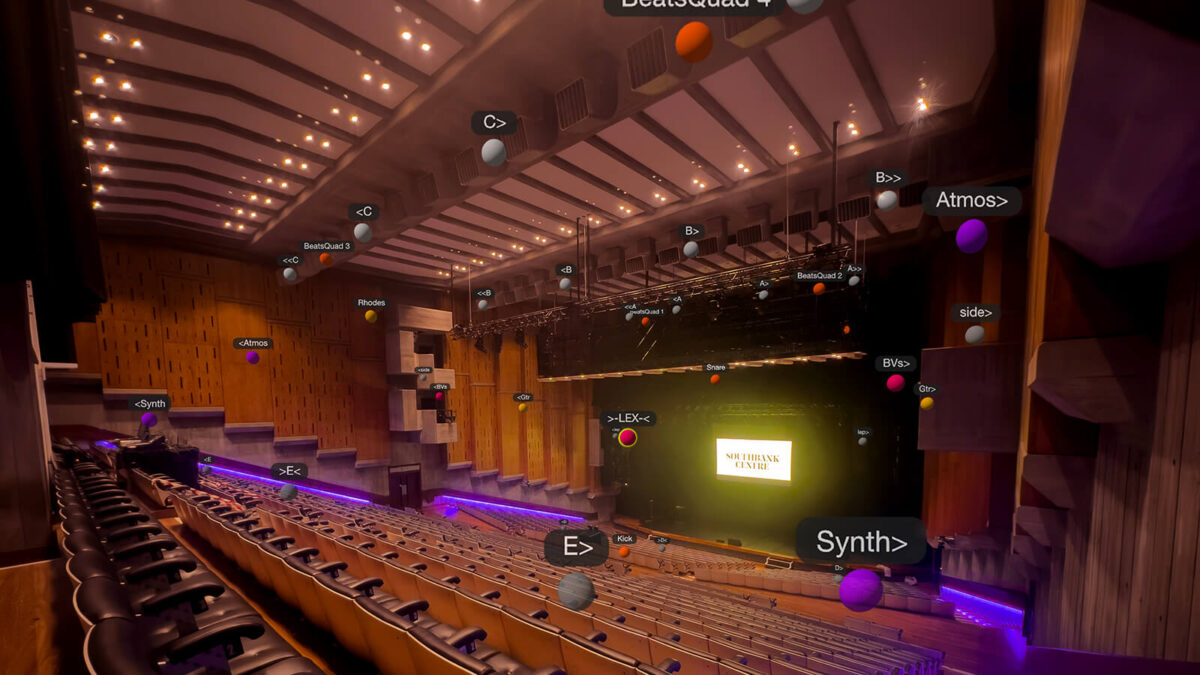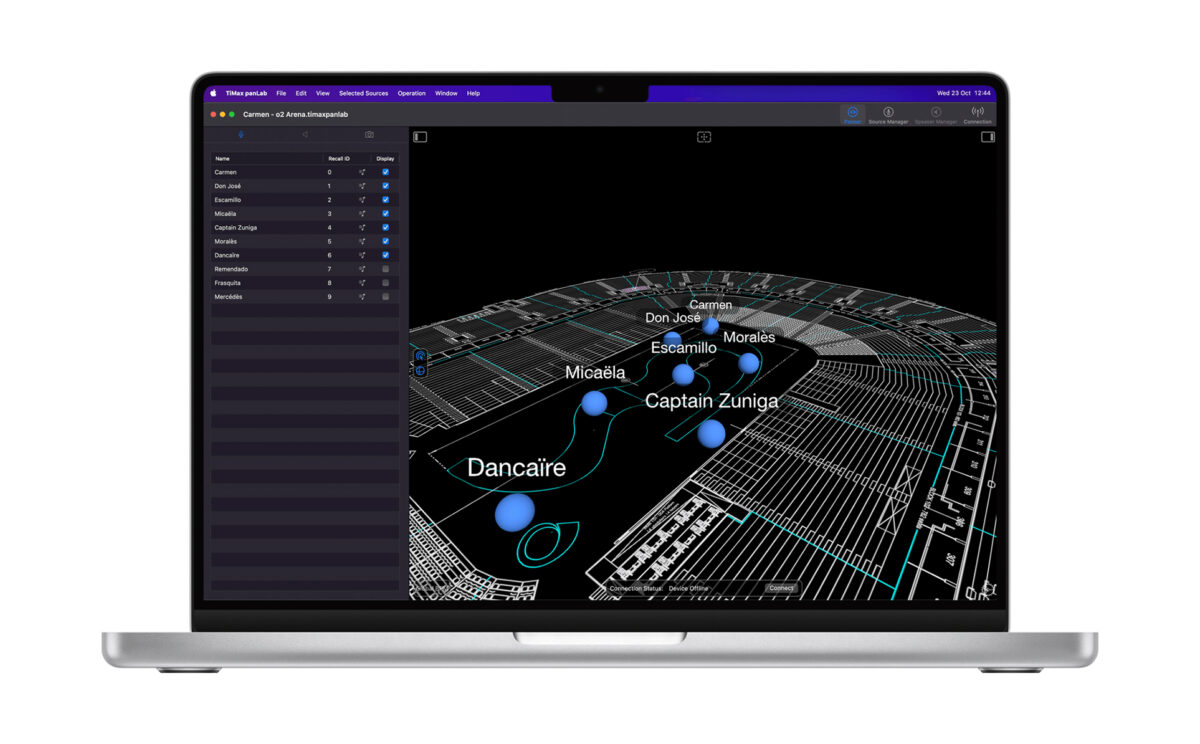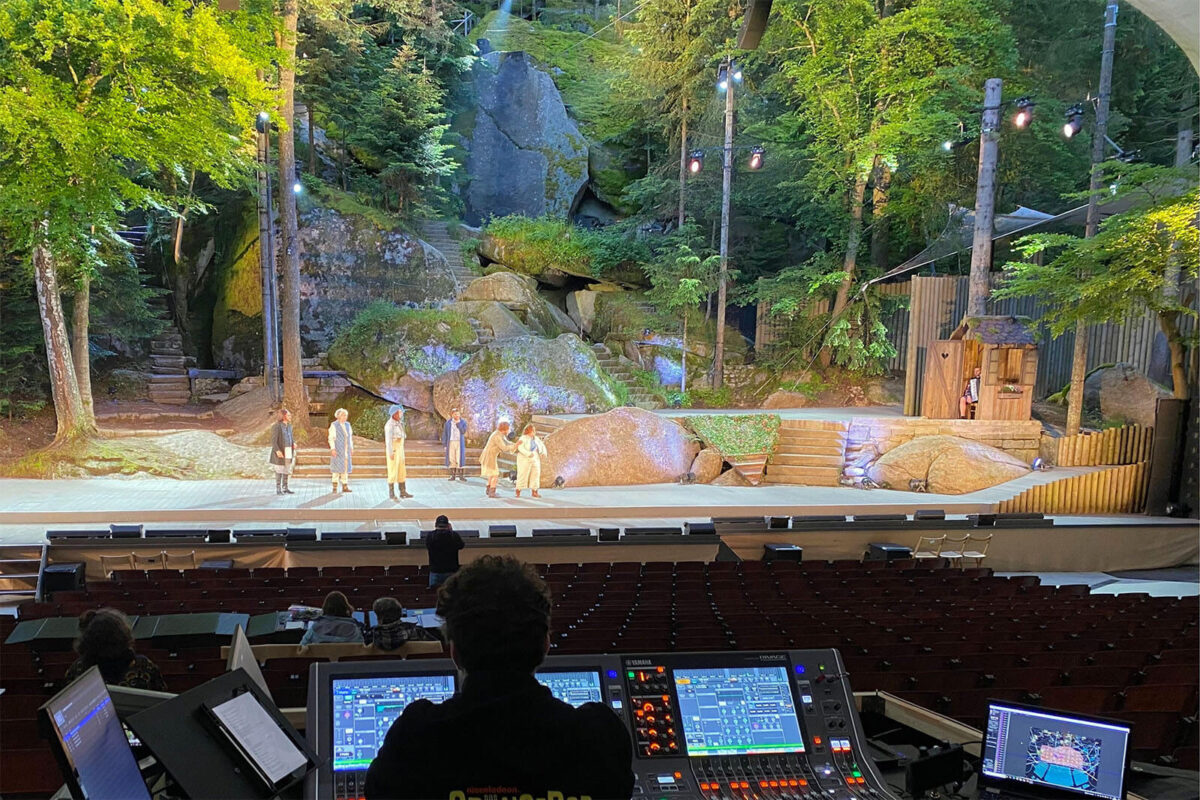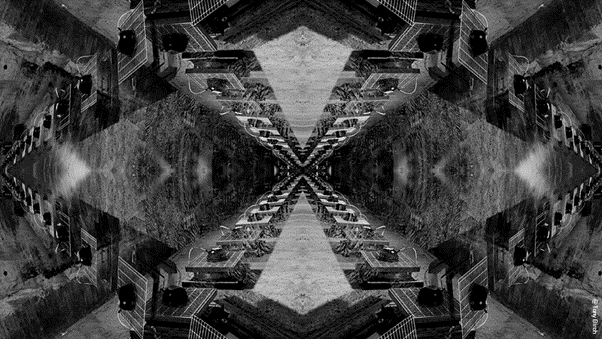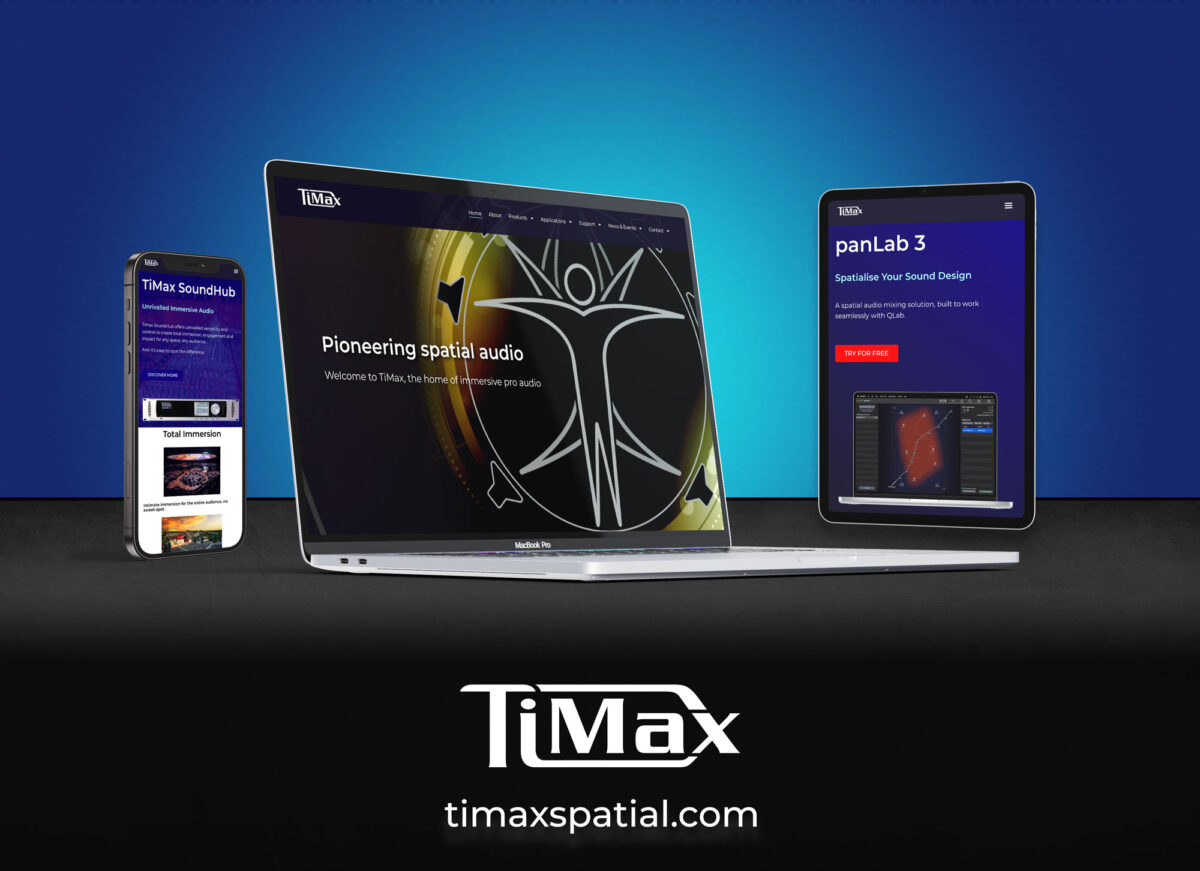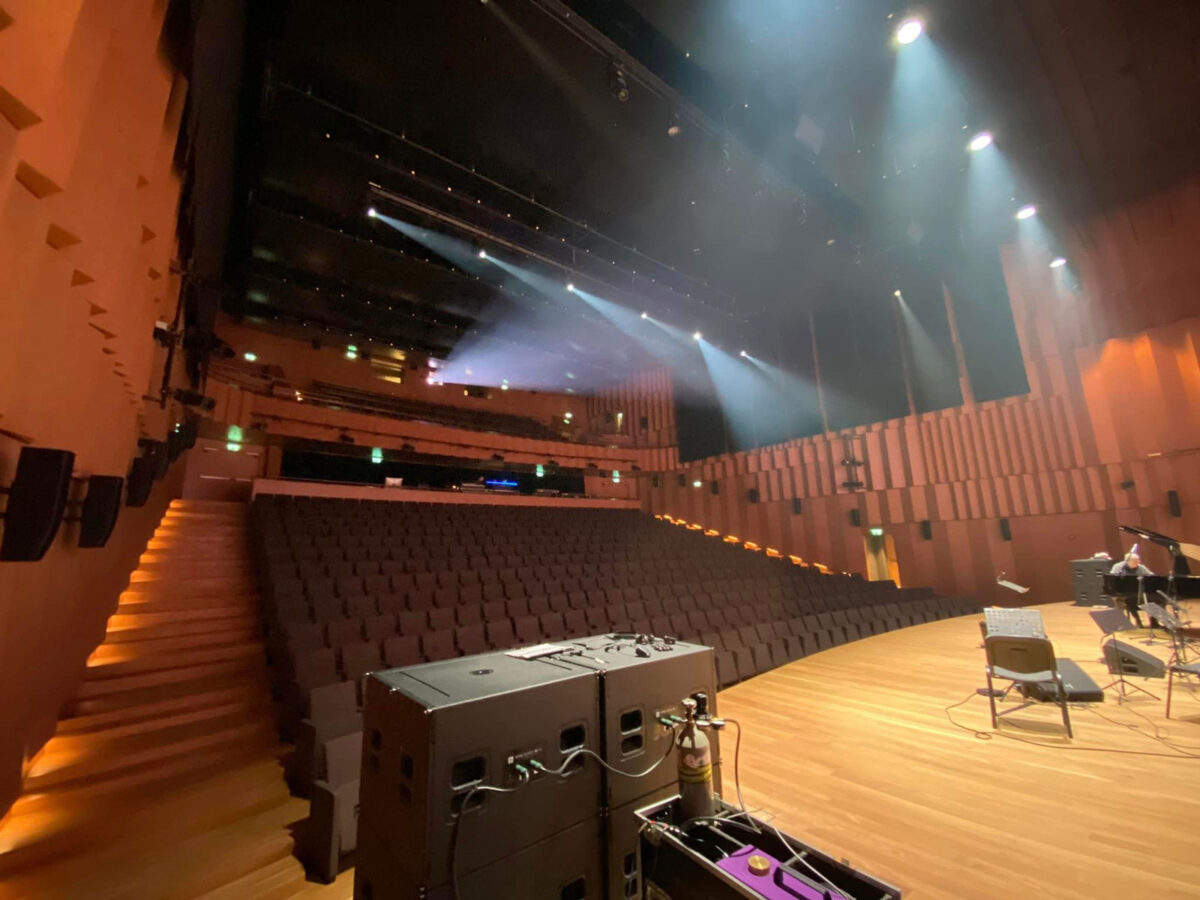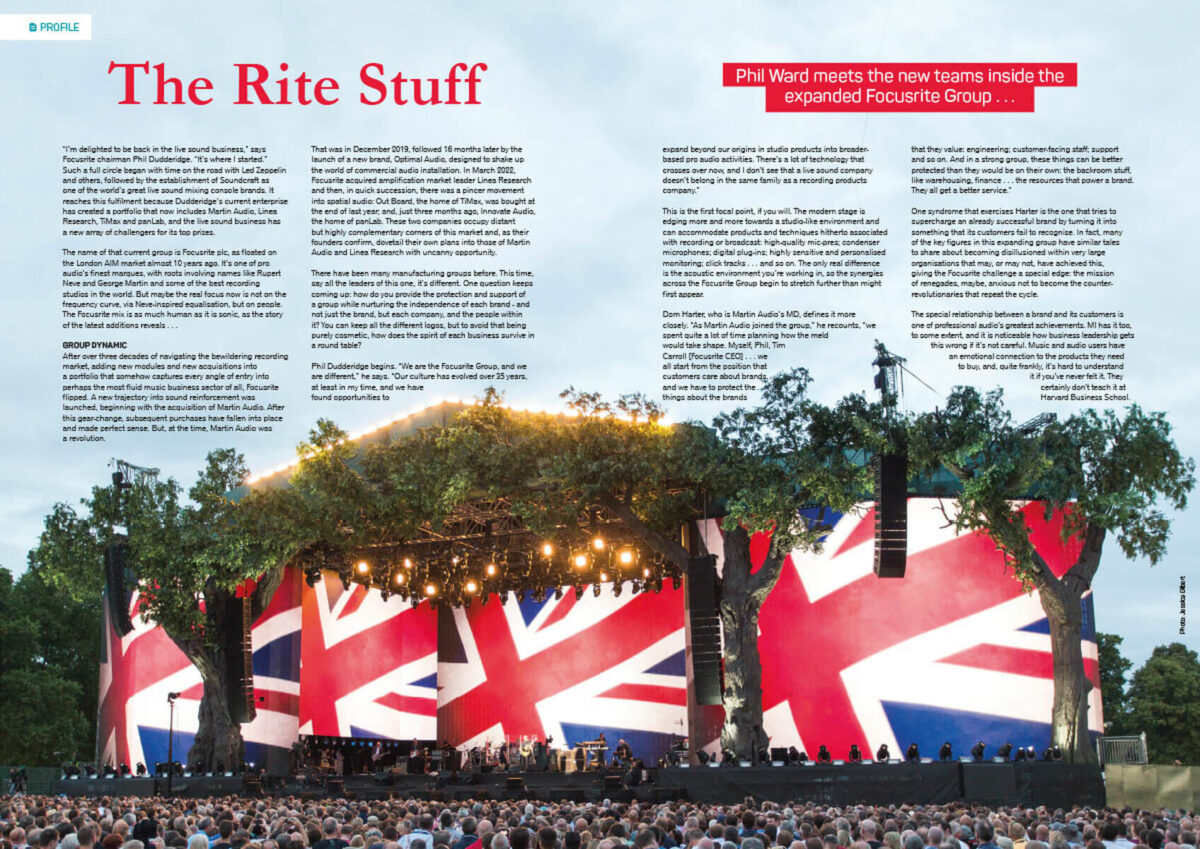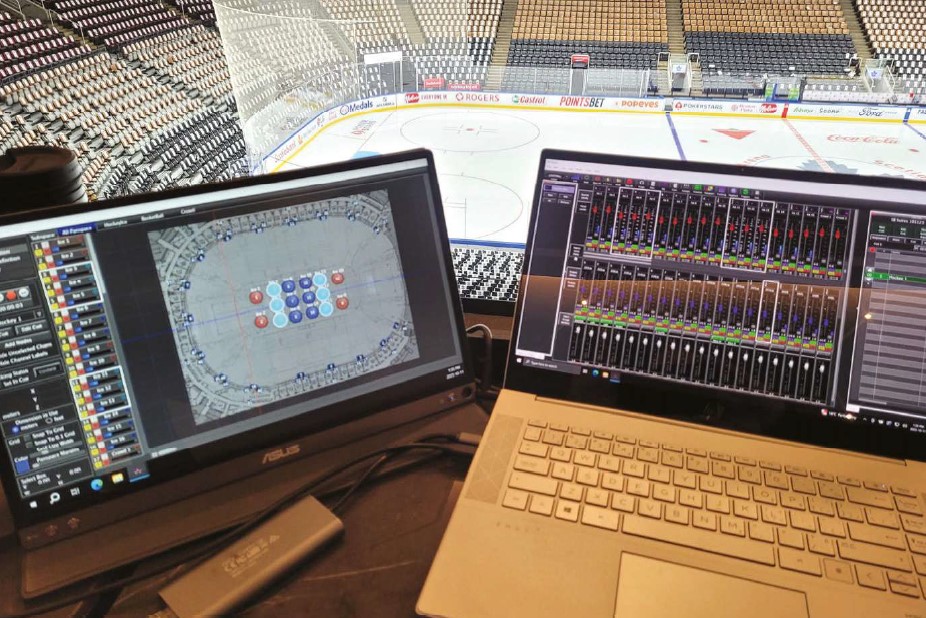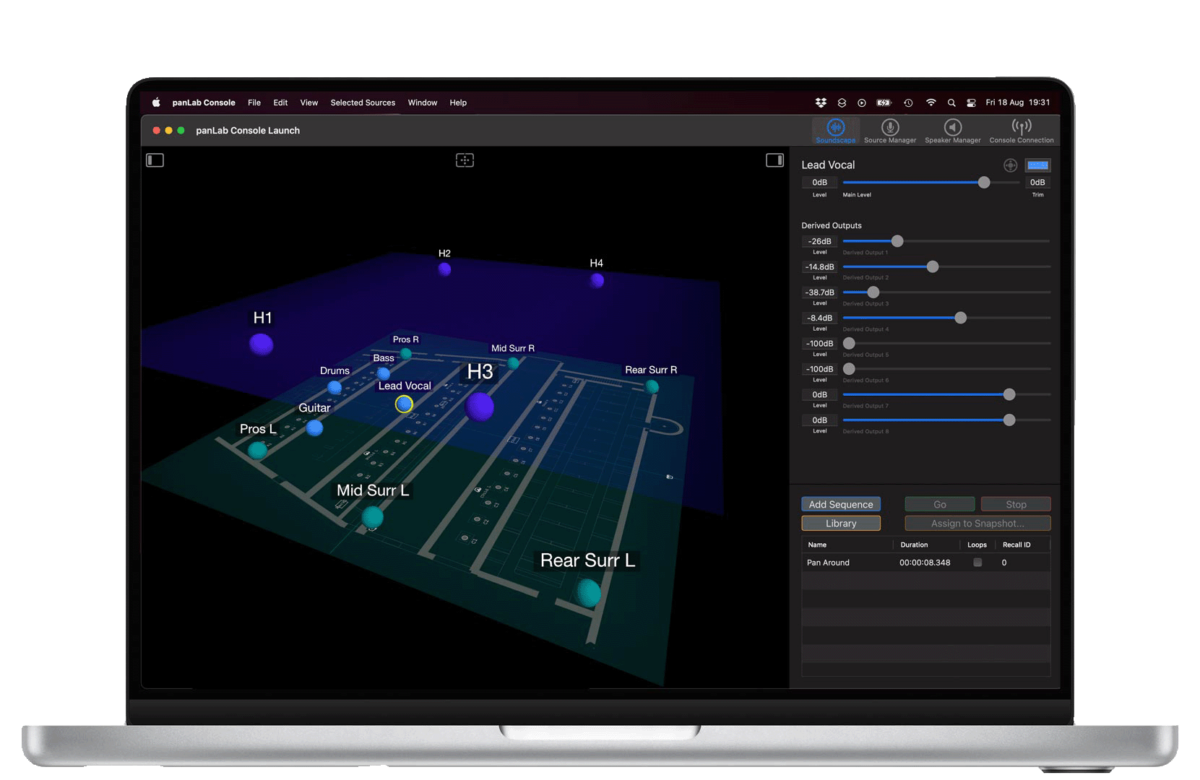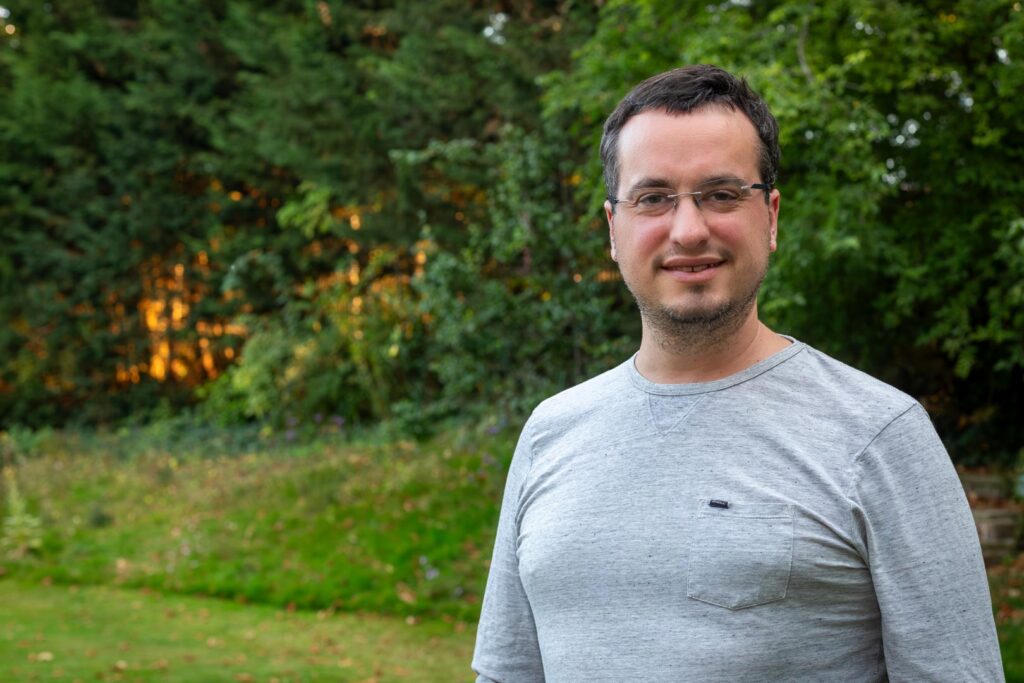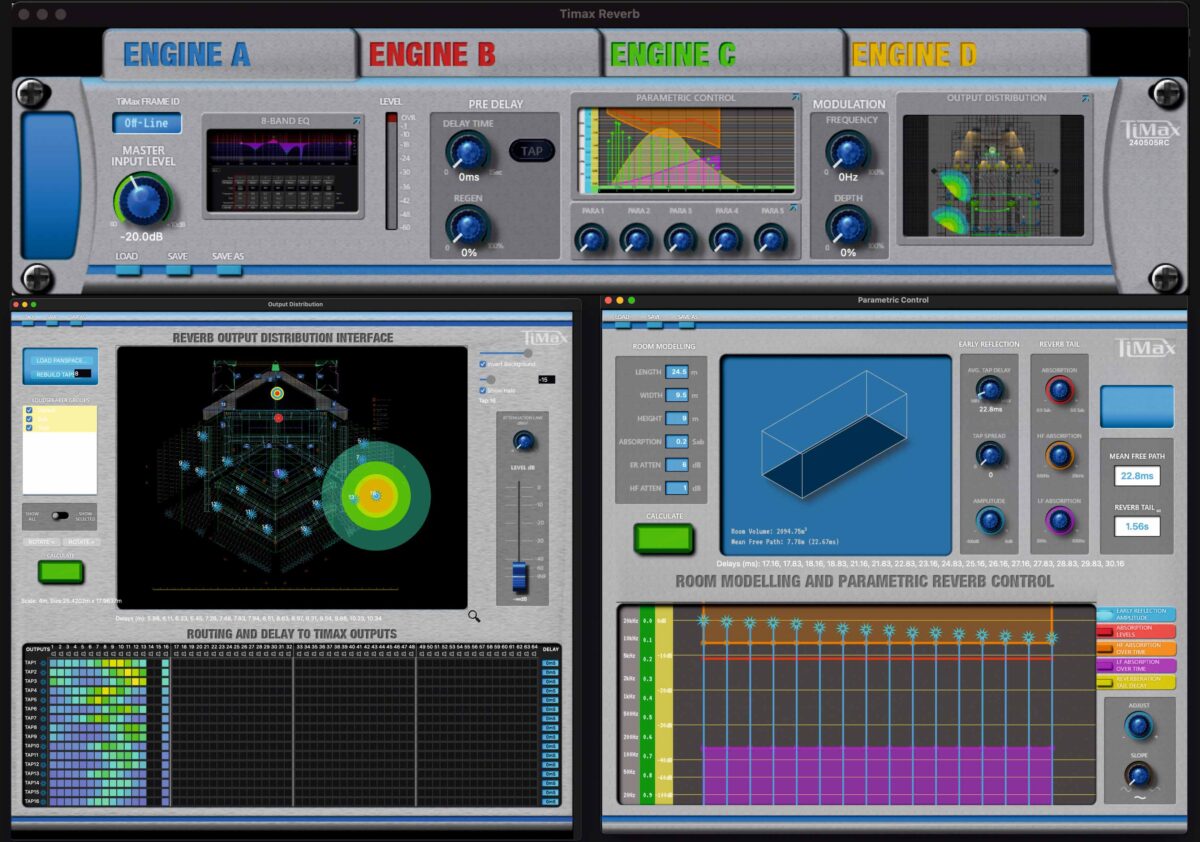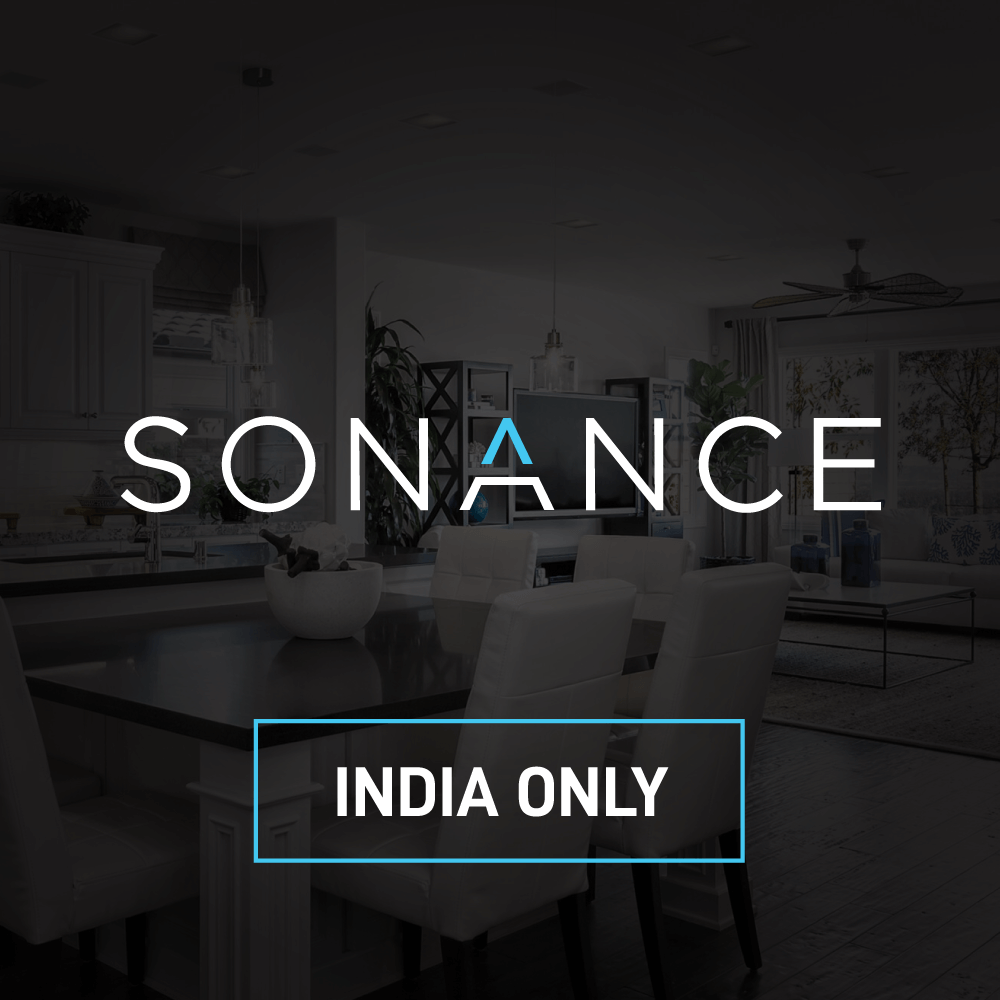The below article, written by Phil Ward, was published in LSi and details the development of Martin Audio and fellow Focusrite Group brands TiMax, Optimal Audio, Linea Research and OutBoard.
(A PDF of the original article may be viewed here).
“I’m delighted to be back in the live sound business,” says Focusrite chairman Phil Dudderidge. “It’s where I started.” Such a full circle began with time on the road with Led Zeppelin and others, followed by the establishment of Soundcraft as one of the world’s great live sound mixing console brands. It reaches this fulfilment because Dudderidge’s current enterprise has created a portfolio that now includes Martin Audio, Linea Research, TiMax and panLab, and the live sound business has a new array of challengers for its top prizes.
The name of that current group is Focusrite plc, as floated on the London AIM market almost 10 years ago. It’s one of pro audio’s finest marques, with roots involving names like Rupert Neve and George Martin and some of the best recording studios in the world. But maybe the real focus now is not on the frequency curve, via Neve-inspired equalisation, but on people. The Focusrite mix is as much human as it is sonic, as the story of the latest additions reveals . . .
GROUP DYNAMIC
After over three decades of navigating the bewildering recording market, adding new modules and new acquisitions into a portfolio that somehow captures every angle of entry into perhaps the most fluid music business sector of all, Focusrite flipped. A new trajectory into sound reinforcement was launched, beginning with the acquisition of Martin Audio. After this gear-change, subsequent purchases have fallen into place and made perfect sense. But, at the time, Martin Audio was a revolution.
That was in December 2019, followed 16 months later by the launch of a new brand, Optimal Audio, designed to shake up the world of commercial audio installation. In March 2022, Focusrite acquired amplification market leader Linea Research and then, in quick succession, there was a pincer movement into spatial audio: Out Board, the home of TiMax, was bought at the end of last year; and, just three months ago, Innovate Audio, the home of panLab. These two companies occupy distant but highly complementary corners of this market and, as their founders confirm, dovetail their own plans into those of Martin Audio and Linea Research with uncanny opportunity.
There have been many manufacturing groups before. This time, say all the leaders of this one, it’s different. One question keeps coming up: how do you provide the protection and support of a group while nurturing the independence of each brand – and not just the brand, but each company, and the people within it? You can keep all the different logos, but to avoid that being purely cosmetic, how does the spirit of each business survive in a round table?
Phil Dudderidge begins. “We are the Focusrite Group, and we are different,” he says. “Our culture has evolved over 35 years, at least in my time, and we expand beyond our origins in studio products into broaderbased pro audio activities. There’s a lot of technology that crosses over now, and I don’t see that a live sound company doesn’t belong in the same family as a recording products company.”
This is the first focal point, if you will. The modern stage is edging more and more towards a studio-like environment and can accommodate products and techniques hitherto associated with recording or broadcast: high-quality mic-pres; condenser microphones; digital plug-ins; highly sensitive and personalised monitoring; click tracks . . . and so on. The only real difference is the acoustic environment you’re working in, so the synergies across the Focusrite Group begin to stretch further than might first appear.
Dom Harter, who is Martin Audio’s MD, defines it more closely. “As Martin Audio joined the group,” he recounts, “we spent quite a lot of time planning how the meld would take shape. Myself, Phil, Tim Carroll [Focusrite CEO] . . . we all start from the position that customers care about brands, and we have to protect the things about the brands that they value: engineering; customer-facing staff; support and so on. And in a strong group, these things can be better protected than they would be on their own: the backroom stuff, like warehousing, finance . . . the resources that power a brand. They all get a better service.”
One syndrome that exercises Harter is the one that tries to supercharge an already successful brand by turning it into something that its customers fail to recognise. In fact, many of the key figures in this expanding group have similar tales to share about becoming disillusioned within very large organisations that may, or may not, have achieved this, giving the Focusrite challenge a special edge: the mission of renegades, maybe, anxious not to become the counterrevolutionaries that repeat the cycle.
The special relationship between a brand and its customers is one of professional audio’s greatest achievements. MI has it too, to some extent, and it is noticeable how business leadership gets this wrong if it’s not careful. Music and audio users have an emotional connection to the products they need to buy, and, quite frankly, it’s hard to understand it if you’ve never felt it. They certainly don’t teach it at Harvard Business School.
But there are differences between pro audio and MI, according to Harter – mainly to do with the end user and whether they buy something with which to make music or a ticket to watch it. “But that just means,” he says, “that we have to make sure we’re focused on the right sales solution for what we’re trying to address: we call it either Content Creation or Audio Reproduction, and the market strategies are different. If you tried to fuse them into one, you’d let both sets of customers down.
“It has to come from the top, to be built into the structure, that our organisation will be focused on our customers and receptive to them, and that has to reach all the way back into engineering. We can’t allow the people making the technology at a workstation to become cut off from the outside world.”
There’s a lot of technology that crosses over now, and I don’t see that a live sound company doesn’t belong in the same family as a recording products company . . .
“Martin Audio has enormous growth potential,” continues Dudderidge. “The market it serves is massive globally, and the greatest opportunities are perhaps outside this country. Other parts of the group already have huge market shares and will grow relative to that market – Focusrite itself being a good example with audio interfaces. You can try to grow by doing other things, but run the risk of losing sight of your core business. Focusrite is the audio interface company, which is something I recognised around 2005-2006. We made a strategic decision to do this, and by making that decision it happened. So, different sections of the business will deal with growth challenges in different ways.”
Adding TiMax to the group will help both TiMax and Martin Audio, and adding panLab will help TiMax. But each is independent: TiMax, for example, is still available for use with other branded loudspeakers, and the relationship with Focusrite is being carefully designed to allow this to continue and prosper. “There are many brands in the group,” says Harter, “some are large, some are small, and the trick is to make sure we help each brand in its own evolution, whatever point it’s at, rather than swallowing any one of them into some monolithic entity.”
UPGRADE PATHS
Perhaps it’s the sheer number of aspiring producers, of one kind or another, that use Focusrite interfaces, but the group has become highly sensitive to newgeneration customers who will shape tomorrow’s industry. Early on, Martin Audio adopted strategies to introduce younger users to its products and take them on a journey towards the high end. Now, panLab seems poised to do the same for TiMax, offering a point of entry to spatial audio that may well begin with solutions based on Optimal Audio speakers and end with Tosca at the Royal Opera House.
Getting these customers from the nursery slopes to the Hahnenkamm Streif Downhill is very high on Harter’s agenda, his own son already on a path towards high-end mixing but with no credible path towards spatial audio for someone of his age. “TiMax was a no-brainer,” he says, recalling time at BSS with Dave Haydon. “But it’s not a cheap endeavour, even though it gets amazing results with relatively few loudspeakers. Talking with Dan Higgott – and, firstly, realising just how many thousands of users he’s got! – we realised how we might be able to start building this journey into spatial audio as we’ve done with Martin Audio and the journey towards large-scale PA. We can get people into this concept early on.”
While protecting the loyalty customers feel towards each brand, the Focusrite Group nevertheless has what are now ‘sister’ companies and doors are open. “There’s lots of R&D collaboration, sometimes informally,” Harter says, “and it’s more successful here than I’ve ever seen anywhere else – I think that’s because everybody knows they’re doing it for their own brand. Even if Linea people are working with Martin Audio people, there’s an invoice from one company to another and everyone benefits. As long as we understand every customer and what they want, whatever happens will be for the right reason. Any of our technology is welcome in any market, if it fits.”
“I see them as symbiotic profit centres,” adds Dudderidge. “Each one is identifiable, but they can all be supportive of each other while having their own primary goals.”
At the high end, the combination of TiMax and Martin Audio’s Multi-cellular Loudspeaker Array (MLA) is a huge, mouthwatering, number-crunching prospect, connecting audience and stage in a cat’s cradle of dispersion and reflection. But there is intentionally no ‘group’ R&D structure, according to Harter. “We did not want a hermetically sealed think-tank,” he says. “What we want is for everyone to carry on where they are and be able to reach out and share when they need to. If you are not able to look at the whole system, you are fundamentally limited by your corner of that system. Ambrose Thompson, one of Martin Audio’s key researchers and the lynchpin of MLA, has immediately begun to look at things in a whole new light. Within about five minutes of a conversation with Robin [Whittaker, co-founder of TiMax], new directions were apparent.”
All the time as we’re talking, even with such riches in the hold, Harter steadies the ship. “We have to keep within the limits of what people need,” he insists, “rather than persuade them they need something else that we’ve just thought of. Everything must be application-specific, and if the engineers together understand the complete set of boundaries, they will be able to make cleverer products and better solutions.”
Associated with TiMax for so long, Robin Whittaker and Dave Haydon will gradually step back from their leading roles as new recruits step forward: Rik Kirby, who takes over as commercial manager; and Dan Roncoroni, who is now product manager. Dan Higgott, who founded Innovate Audio and launched panLab, also joins the team. Whittaker and Haydon will not disappear overnight, with the umbilical cord still unclamped. But it was time for change.
“There is a responsibility towards the community you create, and we realised that more resources were necessary,” says Haydon. “Various people have approached us, it’s no secret, but we wanted the right people. Dan Roncoroni has been working with us as a designer and consultant for several years, and we’ve known Dan Higgott’s work for a while. Dom and I realised we’d need a commercial manager as well, so when Rik became available it was a perfect fit. These are people with imagination and passion.”
“The association with a world-leading loudspeaker brand was important to us,” adds Whittaker. “Essentially, the sale is driven from the loudspeaker sell, and the DSP follows. To be honest, we were lucky that there was one left that we would be happy to put our name to!”
How do TiMax and panLab complement each other? “It’s all about the customer journey,” explains Higgott. “My background has been trying democratise access to spatial audio, and making it possible for those without the time and budget for the original solutions. That’s Dom’s vision, too: how to get people on board, intuitively, with a whole new way of approaching sound design. Both products are now under the TiMax brand, but creative users can select according to their resources, their experience and their individual aims.
“The two software suites will talk to each other and make it easy to switch between panLab projects and TiMax projects, and people will become familiar with the same user interface. My view is that as many sound engineers as possible should be able to work with spatial audio, whether from within the console or elsewhere, and that ties in perfectly with Focusrite’s vision of inclusivity.”
“We’re quite early on the roadmap,” points out Whittaker, “so it will be a while before we can reveal any specific features. But the workflow will be as familiar as possible for everyone.”
Kirby’s inclusion is highly serendipitous: he decided to return to the UK from the US, where he had many successful years at Renkus-Heinz and with his own distribution company Allied ProTech – which included both Linea Research and Optimal Audio – and found an opportunity waiting. “20 years ago, Robin and I were in Canada doing separate seminars at AES on TiMax and SoundWeb,” he recounts, “and I can almost recite his presentation today, it was that impressive. The psychoacoustics of it really made an impression, so to get this chance to work with TiMax so closely is amazing.”
Most likely, the ‘panLab’ name will remain as a version of TiMax, so the many who have already embarked on the journey will find familiar territory. It’s a good strategy, because it protects the spirit of each product while uniting them in a common goal: that goal being the piecemeal transition of the professional AV industry to spatial audio. Which leaves the question: what is the professional AV industry today?
“I’ve been using spatial audio in various sectors: themed entertainment; theatre; retail – all sorts of applications,”says Roncoroni. “When this role came up, I saw it as a way of getting closer to TiMax – which, objectively, is the best hardware renderer for every use case I’ve seen – and a way of giving something back to Robin and Dave. I was a customer of theirs when I was at Autograph, and since then I’ve been specifying and commissioning TiMax as a freelancer.
“There is a growing understanding of the workflow benefits of using a hardware renderer in theatre and concert sound, but the new markets are in areas where the emergence of Dolby Atmos in streaming services has created at least an awareness of spatial audio. The appetite may be growing broadly, but I would say the traditional pro audio markets are coming to terms with it more sensibly. They don’t need the hype, and TiMax has the most educated user base of all.”
RESEARCH & DEVELOPMENT
Linea Research is now the power, as it were, behind the throne. Ben Ver is engineering director and for him, again, the timing was just right. “The size Linea was before acquisition is a difficult size for companies,” he says. “It’s big enough to do many things a start-up cannot, but not enough to break through the glass ceiling and double, or triple, your turnover. You start to need systems and processes that medium-size companies don’t have. We now have a professional HR team with corporate, legal back-up, and while we managed for 20 years without it, it takes that pressure off. The same is true of IT, which covers everything from my PC being faulty to the integration of GitHub and online registration, for example.
“From an R&D and engineering point of view, I no longer have to deal with any licensing renewals. They deal with it all. We’re in the process of migrating some of our systems over to the Focusrite way, and the group already has preferred software for various things: I can ask what the in-house preference is, and I’m free to use that. But it’s still my choice. I’m not told what I must use.”
The expansion path is particularly visible, to Ver, in the ability to develop new sales channels. “We had a strong reach,” he says, “but now our horizons are bigger. Being part of a group gives you more leverage. We’re also part of a sub-group within Focusrite, and we’ve been able to align much of our distribution with Martin Audio – where it makes sense. But, again, it’s not dictatorial. It’s adaptable to the best needs of both Martin Audio and Linea Research in each case. We are stronger together. The support is the main thing. But we haven’t been bought because we needed fixing, and we feel as creatively autonomous as we did before. It’s the best of both worlds, really.”
It’s also significant that the freedom to pursue OEM deals – very much the foundation of the Linea business – remains, while supporting Martin Audio with engineering and R&D resources. “Also, every single Linea-branded amplifier is sold into systems that use other makes of loudspeaker,” Ver adds. “Linea is expected to grow on all these fronts: Martin-plus Linear loudspeakers; Linea amps; OEMs.”
The Focusrite deal has not cost Linea any OEM customers either, Ver reports. “In such supply-constrained times, you might think some people would worry about Martin Audio being favoured,” he says. “But that hasn’t been the case. Both Dom and we at Linea have been at pains to make sure that no one in the industry has any justification for thinking that. We said we’d be fair, and we have. In fact, we’ve gained one or two significant OEMs since acquisition.”
There may also be less product-bending at Linea than you might assume, given the access to both Martin Audio and TiMax R&D. “We were acquired as the experts in amplification,” Ver says, “and no-one else in the group does it. It’s more the other way round: to compete at the top level, a loudspeaker manufacturer has to own its electronics destiny. OEM is not sufficient. We’ve been supplying Martin Audio on that basis for a while, but it doesn’t get Martin Audio precisely what’s necessary to reach the very top – which was part of the reason for the acquisition. To gain extra footing in this sector, there is now the means to create future loudspeaker platforms that will absolutely go toe-to-toe with anyone. With ourselves, Martin Audio and TiMax, Focusrite has deliberately bought technology leaders. It’s a clear statement of intent.”
As is this, from Ver: “I can imagine an amplification platform ideally suited for use with TiMax appearing on my radar – in the same way that designing power modules for active loudspeakers tailored for Martin Audio’s requirements is already on my radar. That’s the advantage of having Linea in the group.”
Again, these are mutual advantages, not mob rule. There is no roadmap for coercing customers into buying a one-stop solution, simply in order to grab market share. The respect for customer choice rules that each brand must be able to continue its presence on the market as before, competing openly and freely, and not be compromised by any kind of centralised control beyond the choice of paperclips. Similarly, each product management decision must be to the benefit of everyone involved, with solid, applicable reasons for it. An ecosystem will evolve, and deliver its own promises, but it won’t be the only reason to buy from the Focusite Group.
It’s a new era. Beautiful as they were, in the 1980s Focusrite only sold – only made – two Forte consoles ever, at a time when the luxury recording market was in decline. Dudderidge stepped in then, and has continued to steer Focusrite to this point, a point at which the industry is about to recalibrate audio output as never before.
In one sense, sound reinforcement is a tight bottleneck of point source and line array exit points, all that clever processing covering a tiny percentage of air space. The rest of it – every nook, cranny and angle where people walk, breathe and listen – is just waiting to be filled. Rite here, rite now, you could say.

